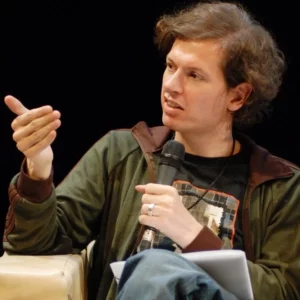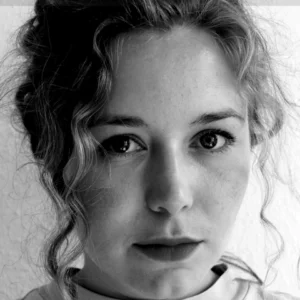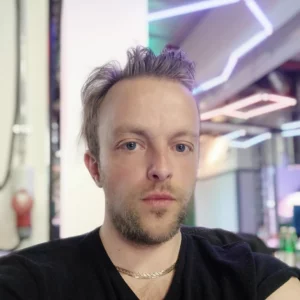World-Building: Funding artistic production forms under changing circumstances
Lecture at the „Transformationen der Theaterlandschaft“ Symposium
Prof. Dr. Kai van Eikels, Laura Pföhler, Christoph Wirth – Ruhr Universität Bochum
Exposé
The Covid crisis brought on a life-threatening situation for the independent scene, which has been the most important creative motor in the fields of theater, dance, performance, circus and children’s and youth culture for the past decades. However, it has been working under extremely precarious circumstances so that artists’ aesthetic and often also political/social joy of experimenting regularly coincided with self-exploitation at the very edge of subsistence. In a normality that determined a mode of production with short cycles and low costs as well as few performances despite tour schedules, the closure of production and performance venues during the lockdown led to the system’s collapse within a short period of time. NEUSTART KULTUR was able to keep many artists and groups from going under. However, the necessity of remodeling financial, production and performance structures that combine crisis resilience with the support of innovative movements as they are currently already appearing remains.
Our study examines such innovative movements. They focus the interactions between changes in work processes and aesthetic changes. On the basis of “good practices”, we point out seminal approaches with which artists from the independent scene have reacted to the challenges in the 2020 and 2021 crisis. The approaches have the following in common: they develop ecological aesthetics for live arts. In a careful exploration and reflection of the current cessation, the study entitled "World-Building" develops the vision of a culture that mediates social, political, ecological and aesthetic processes by offering people opportunities to shape world(s) together - and thus practice the forms and dynamics of what they share in common, and the ability to maintain a self-organized civil engagement for the necessary radical social change.
1. Critical affirmation of digital technologies and own programming of software in online and hybrid formats: The live arts test how artistic ways of working can appropriate implemented software in such a way that its use creates its own freedoms in the framework defined by product design; they also experiment with coding. They use embarrassing moments of technical slip-ups for glitch strategies that, in their functionality, also question social forces, gender conventions and established power structures. Animation thus turns into a general principle of action: the technology – whether it’s text chat, telephone or VR – animates us to enliven what it presents to us. Instead of a mass of objects that exist in a scene before our eyes, we experience the world as a milieu to which we ourselves belong.
2. The power of animation is redefining liveness: Live is currently everything that feels live. Artists are focusing less on the design of overwhelmingly illusionary virtual worlds and more on clever cooperation with the imagination of the participants. Animation thus becomes a general operating principle: technology-whether text chat, phone, or VR-animates to bring to life what it presents. Instead of being a set of objects on a scene before our eyes, we experience the world as a milieu in which we ourselves belong.3. A remix of the senses – from the image of a scene to an evocative voice: The visual recedes behind voices and suggestive soundscapes – in a reaction to the pandemic-induced screen fatigue but also inspired by the power of ASMR videos to stimulate intense physical relationships online: “The medium is massage.” Questions of the borders between bodies can be placed and newly raised.
4. Common world building redetermines the concept of “performance”: The live arts take up formats like Live Action Role-Play (LARP) in order to enable a collective research process in the mode of world building in which participants invent and embody characters. These alternative self-designs question themselves and test the possibilities of living together. A temporary social contract is created that is simultaneously an ecological contract between people and diverse other, realistic and fantastic species.We recommend: a) enabling longer project durations in order to reflect the increased need for time in software development, learning processes and transdisciplinary cooperations; b) expanding open research processes; c) supporting collective artistic (research) practice to a greater degree, not just in competition with individual projects or individual groups and we thus suggest a new format: network artistic research.
Involved
-
Prof. Dr. Kai van Eikels
Ruhr University Bochum
 © privat
© privat
Prof. Dr. Kai van Eikels
Ruhr University BochumKai van Eikels is a philosopher, theater and literature scholar. After visiting professorships in Gießen, Berlin and Hildesheim, he is currently a senior academic advisor at the Institute for Theater Studies at the Ruhr University in Bochum. His research focuses on anarchic, self-organized collective forms; art and labor; politics of the performative; synchronization, time and materiality; cuteness. Publications include "The Art of the Collective. Performance between Theater, Politics, and Socio-Economics" (2013); "Art works - Aesthetics of Postfordism" (with the Art + Labor Network, 2015); "Synchronize. An Essay on the Materiality of the Collective" (2020););
Theory-Blog: https://kunstdeskollektiven.wordpress.com
-
Laura Pföhler
Ruhr University Bochum
 © Anne Küper
© Anne Küper
Laura Pföhler
Ruhr University BochumLaura Pföhler studied sociology at the University of Mannheim and cultural mediation with a focus on theater at the University of Hildesheim. As a member of the collective STERNA | PAU and the music theater network fachbetrieb rita grechen, she develops performances and participatory formats in digital, public and theatrical spaces as a freelance theater maker. Her research focuses on participation, forms of feminist self-organization, witchcraft and hacking as political technological-ecological practices and pop culture.
-
Christoph Wirth
Ruhr University Bochum
 © Christoph Wirth
© Christoph Wirth
Christoph Wirth
Ruhr University BochumChristoph Wirth, *1985, works as dramaturg, director and musician. Under the name OS (OBLIQUE SENSATIONS/OBJECTIVE SPECTACLE) he develops interactive as well as -passive performances and performative environments at the intersection of conceptual art, aesthetic research and experimental music. Since late 2019, he has been researching transmissions of virtual-reality technology for scenic contexts. As a dramaturg, he has worked in and for various constellations, including Laurent Chétouane, PACT Zollverein, Centraltheater Leipzig, and for many years for the independent groups Internil and Institutet. Guest lectureships and workshops have taken him to TEAK Actors Studio Helsinki, Manufacture Lausanne and UdK Berlin, among others. He is currently a scholarship holder at the Academy for Theater and Digitality Dortmund.